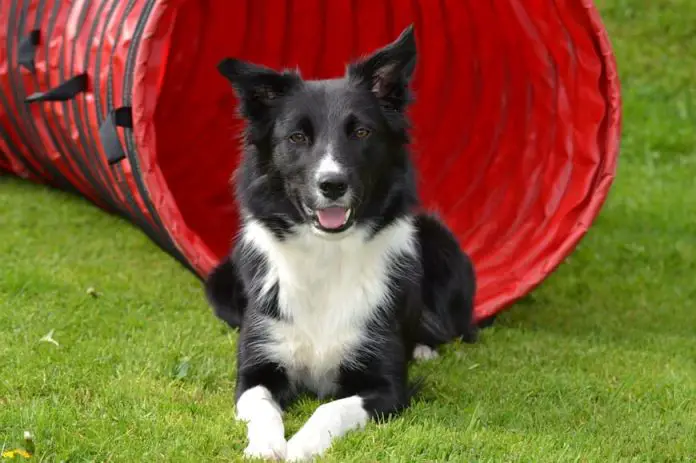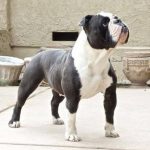Border Collies are among the top choice for family pets. It’s hard not to fall for the Collie’s even temperament. They are playful, sociable, and smart. While there are many things to love about this fluffy breed, there are also a few drawbacks in living with them.
Do Border Collies shed? Yes, their shedding level ranges from moderate to high and that’s probably one of the biggest drawbacks in having a Border Collie as a pet. Learn how to deal with it in today’s post.
The Border Collie Coat
Border Collies have double coats but not all of them have the same coat texture on the undercoat and on the topcoat. This is because the coat texture of Border Collies is divided into two varieties and you will be able to confirm your Collie’s coat type starting at five weeks of age.
The first and more common type is the rough-coated variety, which they inherit from their Nordic ancestors. These Collies have a medium-length coat. You can also see feathering on some parts of their body, like their legs and belly as well as the chest. They also have trimming around the tail.
Rough-coated Border Collies are quite more challenging to groom because they have a thick and dense coat. They need regular grooming to prevent the coat around their ears from matting. An undercoat rake can make your job easier but better be cautious in using this tool because it can irritate your pet’s skin if you are not gentle enough in brushing.
On the other hand, there are Collies who boast a smooth coat texture. Smooth-coated Collies sport a short coat but it is usually loose compared to rough-coated Collies. They are easier to maintain than rough-coated Collies because their coat doesn’t easily attract dirt and you don’t have to worry about their hair matting.
As heavy shedders, Border Collies need to be groomed at least three times a week using a wide-toothed comb. It prevents their coat from forming mats and developing tangles. Brushing also takes away the dead skin cells, which keeps the coat looking shinier and healthier.
Collies go through blowing of the coat, just like other double-coated breeds. It is entirely different from everyday shedding because you will see large clumps of hair coming out instead of individual strands. Expect rough-coated Collies to shed more during this time.
Dogs normally blow their coats during the spring because it is the time of the year when they need to prepare their bodies for summer. They need to get rid of their heavy winter coat to keep them cool during the summer months.
It can be frustrating to deal with a large amount of hair but remember that your dog needs this change in order for new hair to grow and get rid of the loose and dead hair. Besides, the change of their coat will also provide them comfort for the upcoming season.
Like many other double-coated breeds, this seasonal shedding can repeat in the fall or when summer is over and winter is approaching. They shed heavily but not as dramatic as the shedding sled dogs like Huskies go through every year.
It can be tempting to shave a Collie but never ever shave your dog during summer months. Your pooch still needs his thick coat as it serves as his protection from the weather, cold, and harmful UV rays.
You don’t need to bring your Border Collie to a professional groomer as long as you groom him regularly. This includes brushing and washing as needed. Baths can be followed by blow-drying. You may use a high-velocity dryer to keep your pooch dry but don’t keep the nozzle too near to avoid excessive heat from getting to the pet.
Tips to Manage the Border Collie Shedding Levels
You cannot stop your Collie from shedding, especially when the seasons change, but there are a few things you can do to minimize shedding right even before it starts. Here are some tips that can help you control or reduce shedding in dogs.
- Brush more during shedding season – get the clumps of hair before they stick to your clothe and furniture. There is a grooming brush that gets rid of loose hair like a magnet and stimulates natural oil production. Simply massage it on your dog’s coat to get his shedding fur.
- Sprinkle dander away using baking soda – shake a little bit of it onto your buddy’s coat then brush it. Baking soda contains sodium bicarbonate that helps in balancing the pH level of the skin, which in turn lessens chances of flaking and hair loss.
- Always keep your pooch hydrated – if your dog relies on dry dog food, he may suffer from skin dryness. Your vet may recommend adding moisture in the dog’s diet or increasing his water intake. Apart from ensuring your pet always gets fresh and clean water, always check if his water bowl is clean.
- Add healthy oils in his diet – many pet parents add a drop or two of healthy oils, like olive and flaxseed into their pet’s food. Doing so does not only add moisture in your pet’s diet but it also offers relief to dry skin, which is one of the reasons why dogs flake more and release more dander.
- Offer water-rich foods – apart from adding healthy oils and essential fatty acids onto the dog’s diet, you may also consider offering water-rich fruits and vegetables. There are a lot of human foods that are safe to share with pets. It includes carrots, raspberries, and broccoli.
- Bathe as needed – bathing Border Collies should only be done once every three months. But if yours always spends time outdoors, he may need to be bathed once a month. Use a mild shampoo created for dogs because human shampoos, even if they are gentle to the skin, can irritate dogs.
- Vacuum every single day – one of the ways to keep your home clean and the pet hair to a minimum is to vacuum on a daily basis. Nowadays, you can already buy a robot vacuum that operates on its own. It’s perfect if you are too busy to vacuum and it also cleans hard to reach surfaces.
- Use a squeegee on fabrics or carpeted area – for surfaces that are hard to clean using a standard vacuum, it helps to have a squeegee in handy. It’s the best tool to use for removing pet hair on couches and on carpet floors.
Border Collie Health Problems
Certain health issues can make dogs shed more than the usual. Keep an eye for the following issues and their symptoms:
- Food allergy – proteins in certain foods can cause hypersensitivity in canines. Allergy to food is a genetic problem and the symptoms will show when it is triggered. The common sources of allergy in canines are chicken, beef, and dairy. Some dogs can also develop hypersensitivity to a number of food items.
- Parasites – when a dog is infested with fleas, lice, or mites, he is at risk of losing a great amount of hair and suffers from intense shedding. These are transmitted when dogs ingest parasite eggs from contaminated soil, water, food, or stool. It can be cured using prescription oral and anti-parasitic medications.
- Fungal or Bacterial infections – dogs normally acquire such infections from contaminated sources of water, through bites, and from getting along with other infected animals. The symptoms of bacterial and fungal infections in dogs are lethargy, vomiting, fever, and depression.
- Kidney disease – excessive shedding is one of the signs of acute kidney failure in canines. Kidney failure is caused by a number of factors, including diabetes, lymphoma, and urinary blockage. In some dogs, it is hereditary and it can also happen as a side effect of taking medications on a long-term basis.
There are many possible reasons why dogs shed their coat more than the usual. Always look for signs of health problems and address them with the help of a veterinarian. It can be a major health concern that needs to be treated immediately.
You will know it is abnormal shedding if it is associated with other symptoms like itching and skin irritation. Some dogs also suffer from hair loss because of excessive shedding. If all these signs are present, seek a vet right away.
Conclusion
Regardless of their coat type, Border Collies are heavy shedders. You can manage their shedding through a number of techniques, like adding fatty acids into their diet and using a durable vacuum for cleaning. If you suspect your pet’s shedding is not normal, consult your vet for proper diagnosis and to address any health problem immediately.






















